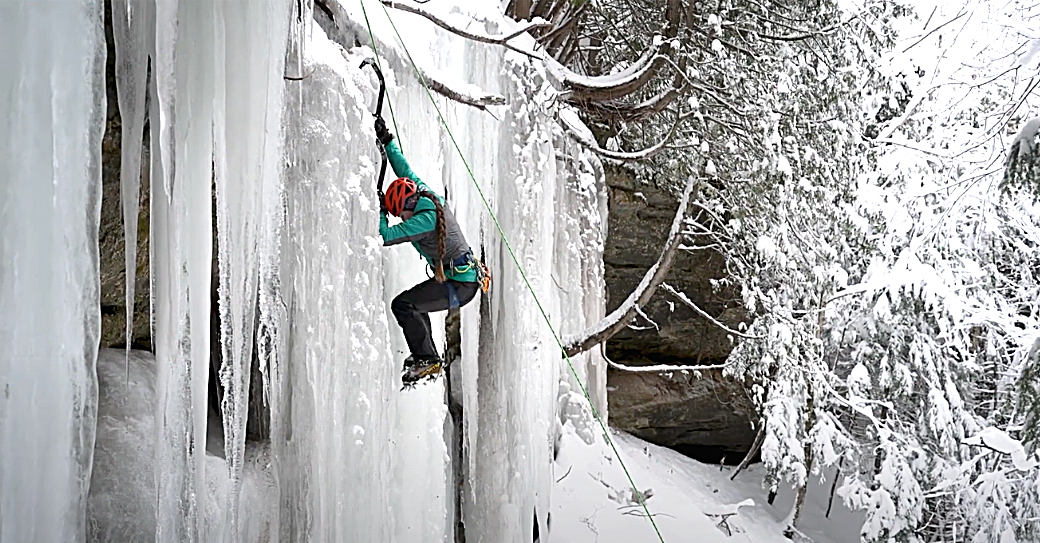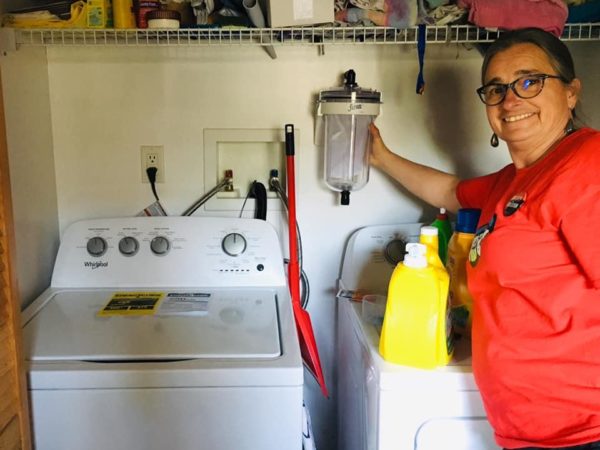
This lesson will explore the phenomenon of ice climbing in the Great Lakes. Students will explore the phase changes associated with water going between the liquid and solid state in order to learn about the formation of ice that is climbable, the melt patterns of ice, and how salinity affects ice melting.
- Know about the winter sport of ice climbing
- Understand the how various factors, such as salinity, affect the rate of melting ice
- Be able to visualize the melting patterns of ice
View the entire lesson plan including teacher background information, worksheets and more below or download for free here.
Activity 1:
This activity is a video discussion of a Great Lakes Now segment featuring the winter recreational sport of ice climbing in Munising, Michigan. During the video they need to jot down four things they took away from the video using the 4 Notes Summary Protocol.
Watch a Great Lakes Now Segment
Activity 2:
While many people dislike winter weather — and for good reason — there are plenty of fun activities to do when it’s cold and snowy in the Great Lakes. Lots of businesses depend on consistent snowfall and colder temperatures to operate in tourism-based winter economies. Now, warmer winters are threatening not just fun activities like ice climbing, but also the livelihoods of these businesses that depend on those activities. What are the costs of warmer winters?
Activity 3:
In this activity, students will create an ice sheet, then strategically melt it using salt and visualize the melting pattern using food coloring. You’ll be able to see channels, holes, and tunnels in the ice, plus it’s really cool to look at.
Activity 4:
The freezing point of water — pure water that is — at standard temperature and pressure conditions is 0°C. But what happens if the water isn’t pure? What if it has salt or some other impurity dissolved in it? Will it still melt or freeze at 0°C? As we saw in the ice melting patterns activity, the salt caused some spots on the ice sheet to melt before others that had no salt. There must be something about salt that changes the temperature at which water freezes/melts; otherwise, the ice sheet spots with no salt would have melted at the same temperature. This process of affecting the liquid-solid phase change temperature of a substance is called freezing point depression. But are there other effects that salt or different conditions can have on melting ice? In this experiment, students will investigate the factors that affect the rate of ice melting.
What Affects the Melting Rate of Ice?
Check out Great Lakes Now’s segment on ice climbing and other segments featured in Episode 2302: Ice Climbing and Offshore Wind on this month’s landing page.
If you use this lesson or any of its activities with your learners, we’d love to hear about it! Contact us with any feedback or questions at: GreatLakesNow@DPTV.org




